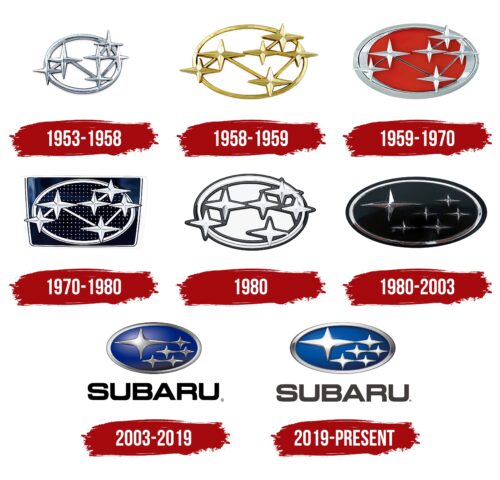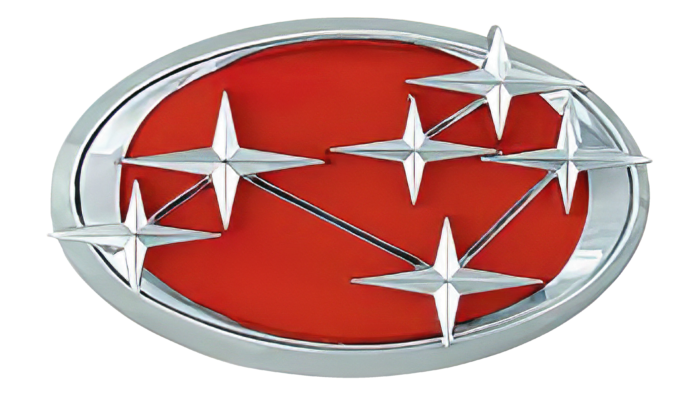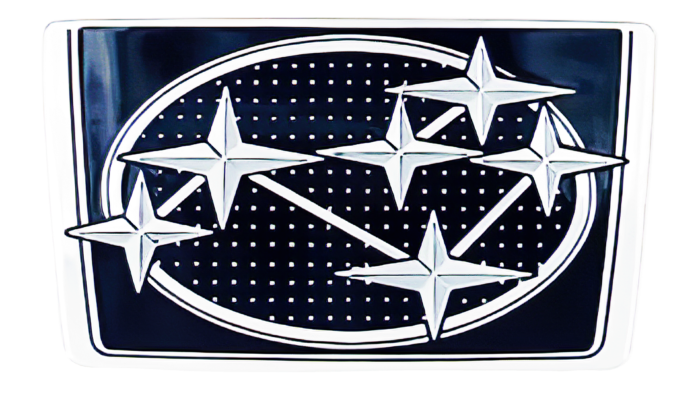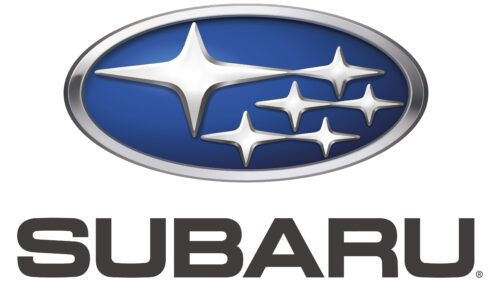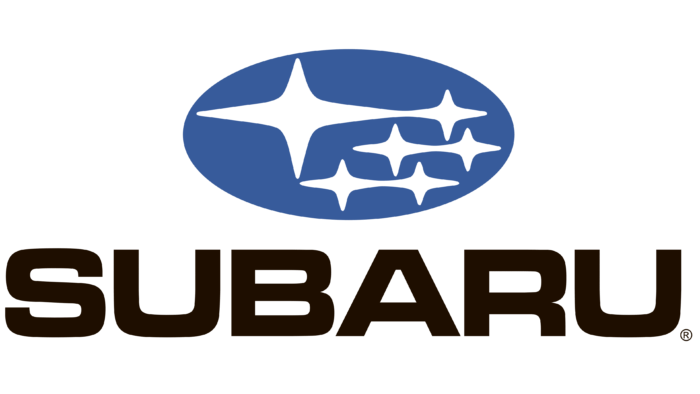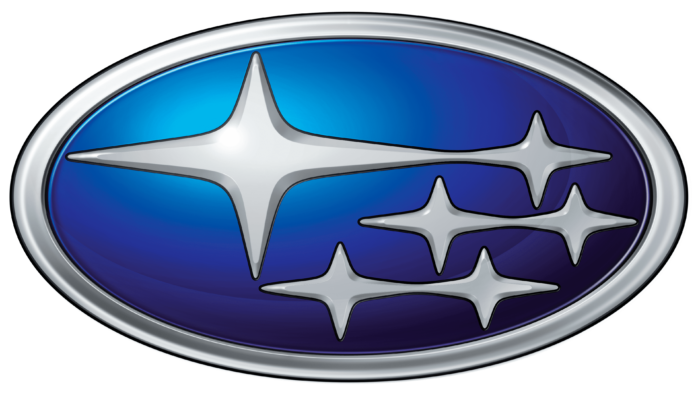The thoughtfulness and perfection shown on the emblem make the company’s cars a star in the automotive market. The Subaru logo reflects technical excellence and a presentable appearance, which ensures smooth and quiet movement.
Subaru: Brand overview
Subaru is a Japanese automobile manufacturer called Subaru Corporation, formerly known as Fuji Heavy Industries. It was founded in the summer of 1952. It was founded by Kenji Kita and Chikuhei Nakajima. The head office is located in Ebisu (Shibuya, Japan).
Before becoming a leading transport manufacturer, the company went through a difficult path, leading to an up-to-date identity, name, and status. She started with Fuji Heavy Industries, owned by the Aircraft Research Laboratory and headed by Chikuhei Nakajima. The earliest events date back to 1915. Then, in 1932, the company was reorganized into the Nakajima Aircraft Company.
In 1946, the former aircraft manufacturing was transferred to scooter manufacturing and was named Fuji Sangyo Co. A few years later, the newly formed structure was divided into 12 small firms by the legal requirement of the Corporate Credit Rearrangement Act, adopted in 1950.
Three years later, six of them decided to join another newly created company. This is how Fuji Heavy Industries was born. Kenji Kita, who headed it, wanted the firm to be engaged in the manufacture of automobiles, so he re-specialized it. He also chose the name and approved the corporate symbols.
Meaning and History
Subaru is the Japanese name for the constellation Pleiades. It is also called the Seven Sisters, whose image the designers recreated in the company’s corporate logo. However, despite the word “Seven,” there are only six stars in the emblem since the seventh has always been invisible. The striving for stardom is traced in the concept of the transport equipment manufacturer, so its symbolism has not radically changed.
What is Subaru?
This is the flagship line of Subaru Corporation cars, the only representative of its automotive division.
1953 – 1958
The debut version comprises the classic Subaru constellation – six large stars connected by short lines. Space objects are located in an oval frame and even on it. It symbolizes the part of the universe where this bright cluster is located. All elements are made in the same style and painted in the same color – silver with a cold metallic sheen. This was done on purpose to emphasize the technical connection. The balanced distribution of light and shadow makes the emblem look three-dimensional.
1958 – 1959
The designers briefly made the logo from silver and gold while retaining the three-dimensional effect. However, the stars in this version are more elongated horizontally, possibly due to the beams’ lengthening. Like the connecting lines, the oval frame is much thinner, and the stars have clear protruding edges with a slight reflection in the central part.
1959 – 1970
The first colored Subaru emblem was approved in 1959. Graceful silvery stars, tied with a thin gray string, are on a red background. This color has become the personification of the brand’s passion for movement and progress, reflected in its products. The horizontal oval received a thick edging line with an extension on the sides, so the rays did not go out. Like the stars, it has light highlights that accentuate the metallic texture.
1970 – 1980
The designers have corrected the frame, returning it to a uniform thickness. Therefore, the elongated parts of the stars again protrude beyond the boundaries of the oval. Instead of a red background, a dark blue appeared, reminiscent of the night sky with small luminous dots, among which the bright constellation Subaru flaunts. The figures’ strict geometry emphasizes the logo’s belonging to the technique, where clear edges and structuredness are important.
1980
This is a two-dimensional version of the previous logo, required for use in print and advertising on various devices. Its only difference from the 1970s logo is the lack of lines connecting the stars because their outlines are already connected. The frame in this emblem consists of white, gray, and black lines: the first is the central one, and the others are the side ones.
1980 – 2003
The developers have proposed a version resembling stars as a water reflection. To accentuate this effect, they made the background gradient with a change in color intensity. It changes from top to bottom – from dark blue to light blue. The result is the impression that the stars descend from the sky and plunge into the earth’s sea. This concept is associated with Japanese wisdom, which says that the reflection of the stars in the sea makes them accessible. The manufacturer sets himself, although high, but quite achievable goals, towards which he constantly moves.
2003 – 2019
In the current emblem, the designers emphasized the unity of the celestial stars with their earthly reflection as much as possible. To emphasize this, they used the play of shadows and light. The largest object is on a white and blue background, the rest on a cobalt blue. The area along the silver border is darkened—especially at the bottom right—with convex edging with a three-dimensional effect. The stars are connected in pairs by rays. Below is the inscription.
2019 – today
The current Subaru badge’s navy blue has taken on an azure hue, while the gray has faded to light silver. At the same time, the gradient was preserved, which gives the image a metallic sheen. The arrangement and shape of the stars have mostly stayed the same, but due to the updated palette, they appear larger than before. The ellipse visually became narrower and longer. The lettering has been recolored in dark gray, so the brand name no longer contrasts with the graphic symbol.
Subaru: Interesting Facts
Subaru, part of the Subaru Corporation (used to be called Fuji Heavy Industries), is a car maker from Japan known for making safe, well-performing cars with some cool tech. Subaru has a lot of fans all over the world because they specially make cars.
- All-Wheel Drive Leaders: Subaru is famous for its all-wheel drive (AWD) system in almost all its cars. This system helps cars handle better and stay stable, especially when the weather is bad.
- Boxer Engines: Subaru often uses boxer engines with a lower center of gravity than other engines. This means Subaru cars can handle better and feel more stable on the road.
- Rally Racing History: Subaru is well-known in rally racing, especially with its Subaru World Rally Team. The team’s blue and yellow Subaru Impreza became famous in the 1990s and early 2000s for being tough and fast in races.
- EyeSight Safety Tech: Subaru leads in car safety with its EyeSight technology. This includes adaptive cruise control and pre-collision braking, which help prevent accidents and keep drivers safe.
- Eco-Friendly: Subaru is serious about protecting the environment. Its plant in Lafayette, Indiana, doesn’t send any waste to landfills. Subaru also runs the “Subaru Loves the Earth” campaign to help with various environmental projects.
- Popular in the U.S.: The Subaru Outback and Forester are very popular in the U.S., especially with people who love the outdoors. Subaru’s success in the U.S. shows that it knows what American buyers like.
- Charity Work: Subaru’s “Subaru Love Promise” means it and its dealers do a lot of charity work, helping with pets, the environment, education, and community projects.
- Subaru Telescope: Subaru Corporation is also involved in space exploration with the Subaru Telescope in Hawaii. It’s one of the biggest and most advanced telescopes in the world.
- Design Philosophy: Subaru’s design idea is “Dynamic x Solid,” which is about making cars that look good and work well. Subaru aims for a mix of beauty and usefulness in its vehicles.
Subaru’s focus on safety, tech, and community, along with its special car features, makes it a well-regarded name in the car world.
Font and Colors
The constellation concept on the logo came to management immediately, as the brand consists of six firms, brought together under the auspices of one parent company – Fuji Heavy Industries. This aligns perfectly with the automotive brand’s legal status: six visible elements and one invisible, just like in Subaru’s constellation. Moreover, in a literal translation, its name sounds like “get together.” Previously, this was emphasized by the lines passing between the stars, and now – their pairing symbolizes support and unity.
The logo uses the Square 721 Std Bold Extended typeface designed by typographer Aldo Novarese and published by Bitstream. The corporate palette comprises several shades of gray (graphite, silver, metallic, chrome) and blue (heavenly, light blue, cobalt, dark blue). White denotes light and sun.
FAQ
What is the Japanese symbol for Subaru?
The Japanese symbol for Subaru is スバル. This katakana translates to the Pleiades star cluster M45, the “Seven Sisters.” Tradition says one sister is invisible, so the logo features six stars.
These stars represent six companies that merged to form Fuji Heavy Industries (FHI), the brand’s parent company. The logo signifies the unity and merging of these companies into a stronger organization.
The logo and brand name deeply connect with Japanese culture and mythology. The Pleiades are significant in Japanese tradition. The choice of name and symbol reflects the brand’s heritage and roots in Japanese history and astronomy.
Why did Subaru choose Pleiades?
The brand chose the Pleiades star cluster, called “Subaru” in Japanese, as a symbol of unity. This cluster, known as the Seven Sisters, symbolizes unification. The logo comprises six stars, representing the companies that merged to form Fuji Heavy Industries (FHI), the brand’s parent company.
The Pleiades occupy a significant place in Japanese culture and mythology. This makes them an important symbol for the brand. The six stars in the logo visually represent these companies’ merger and unity, highlighting their union’s overall strength.
What does the Subaru logo represent?
The logo shows the brand’s connection to the Pleiades star cluster, the Seven Sisters. The largest star represents Fuji Heavy Industries (FHI), the brand’s creator. The five smaller stars represent companies that merged into FHI.
The logo has roots in Japanese culture and mythology, where the Pleiades are important. The six stars highlight the unity and strength of the merger of these companies. The choice of Pleiades reflects the brand’s heritage and values of unity and collective strength.
Does Toyota own Subaru?
Toyota owns 20% of the company, making it the brand’s largest shareholder. This ownership gives Toyota influence, although the brand operates independently. The partnership allows them to collaborate on projects and share technology and resources, benefiting both companies while maintaining their unique identities.
Why are there only six stars on the Subaru logo?
The logo features six stars representing the Pleiades star cluster, known as the “Seven Sisters.” Traditionally, seven stars are in the cluster, but one is invisible, so the logo shows only six stars. These six stars are linked to the creation of Fuji Heavy Industries (FHI). The five smaller stars symbolize the original companies that merged to form FHI, and the sixth, larger star represents FHI itself. This design demonstrates the brand’s connection to Japanese culture and mythology, where the Pleiades play an important role.
Is Subaru an Australian company?
No, it is not an Australian company. Subaru is a Japanese automobile manufacturer founded by Fuji Heavy Industries (FHI). The brand’s headquarters are in Tokyo, Japan.
Subaru manufactures a variety of vehicles, including sedans, SUVs, and performance cars. The brand is known for its boxer engine layout, symmetrical all-wheel drive, and key car features. Although Subaru has a strong presence in many countries, including Australia, its roots and main activities are in Japan. The company’s Japanese heritage is evident in its name, logo, and design.

